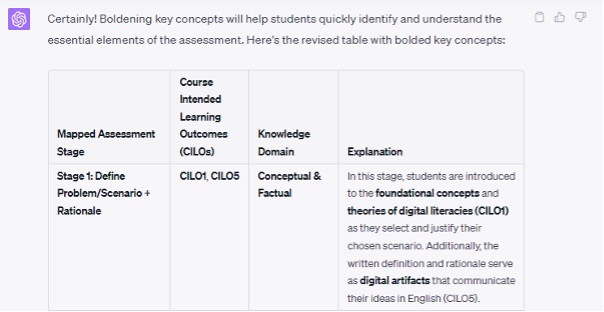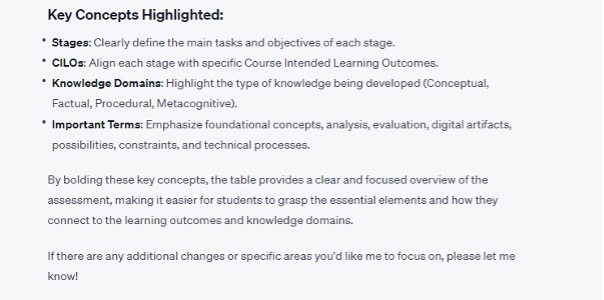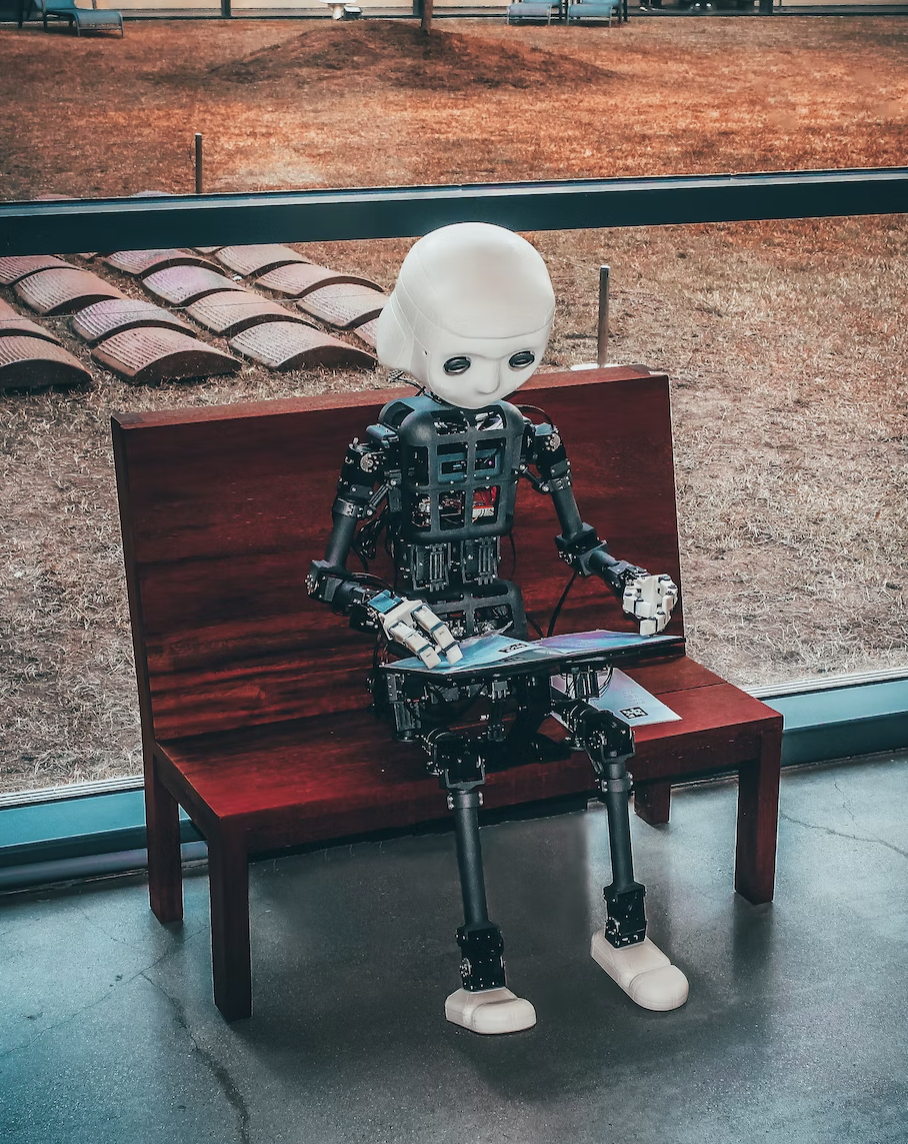Generative AI offers a novel approach to course design – when there’s a human in the loop, writes Sean McMinn. He explains how it works in practice with a step-by-step breakdown of the process.
There has been much excellent discussion about how generative artificial intelligence (Gen AI) will impact education, predominantly focusing on academic integrity and assessment design. However, ChatGPT’s potential role as a co-designer in the learning design process has been less discussed.
Generative AI offers a novel approach to curriculum development and course design. Faculty members can use standard AI tools, such as ChatGPT, to brainstorm ideas, generate assessment rubrics, or even tailor learning materials to diverse student needs. Take, for example, a scenario where an educator poses a question to an AI about making a curriculum more inclusive. The AI, drawing from a wealth of research and best practice, might respond with insights and suggestions that align with the course’s learning outcomes and the institution’s broader educational goals.
A dialogic tool
Through the lens of the digital literacy course at Hong Kong University of Science and Technology (HKUST), I’ve explored how tools such as ChatGPT can serve as a design assistant, aligning course intended learning outcomes (CILOs) to assessment design, visualising complex relationships, and embracing the nuanced application of near and far transfer.
This process saved me time – it took a couple of hours compared to the day it would normally take – but that is not my primary reason for experimenting with GenAI. Within my own institution, and I’m sure at others, there is concern that GenAI will short-circuit the creative process involved in developing a course. On the contrary, using ChatGPT allows me to be more creative. Before this, I would never have thought of explicitly informing students how ILOs and far transfer occur and can be mapped to an assessment activity.
My prior knowledge of learning sciences is important as it helps frame my dialogue with the GenAI tool, allowing me to set the AI pedagogically informed tasks, critically review output, synthesise information, and explore possibilities in an efficient and productive way.
ChatGPT provides me with a dialogic tool to bounce around ideas, check to see if I have overlooked anything, and help visualise ideas (such as in table format) to give me a new perspective on a course. The case scenario I describe below is also just one possibility. For example, one might use the tool to map a programme learning outcomes to the World Economic Forum’s Education 4.0 learning taxonomy.
GenAI presents a transformative opportunity for education, but the role of GenAI in education is not to replace human creativity and judgment but to augment it.As a design assistant, GenAI can offer insights, generate ideas, and provide visualisations that align with educational goals. Yet, the human in the loop remains paramount, ensuring ethical considerations, critical review, and the synthesis of information.
We need to be mindful of ChatGPT’s limitations, such as hallucinations, bias in data and content policy, or how its behaviour changes over time. This is why the human in the loop is essential, and we need to emphasise its role as a design assistant, which focuses on the supportive nature of AI in the educational design process. Unlike an equal partner, the design assistant operates under the guidance of the educator, serving as a useful, but supplementary tool.
However, it is clear that we now have an agent that allows us to strengthen our design process, and the integration of GenAI in education is a promising frontier, full of possibilities, and ripe for exploration.
The human touch
There were a few points where it was clear that having a human in the loop was essential.
- Reminders: although I uploaded the course syllabus with the CILOs at an early stage in the process, later on I needed to remind ChatGPT what they were.
- Prompts: I sometimes needed to follow up with new prompts, which also involved asking ChatGPT to ignore or not focus on content (sometimes it wanted to explicitly refer to Bloom’s taxonomy, which placed too much emphasis on the taxonomy).
- Chats: at times I would have a back-and-forth conversation, where I would ask ChatGPT to revert to an earlier draft because the output wasn’t what I wanted, or I would ask for a few suggestions on a particular question or problem.
- Checks: always vet ChatGPT’s understanding of the framework you are using, to ensure the AI’s understanding aligns with your own.
Under the hood: the key steps in designing my Digital Literacy and English Communication course using ChatGPT
Step 1
I uploaded the course syllabus and assessment information sheet for a one-year undergraduate course on Digital literacy and English communication to ChatGPT-4’s Advanced Data Analysis tool, which can read and analyse text files and datasets. Using Bloom’s taxonomy as a model to guide the learning process, I asked ChatGPT to draft a table that charts how the taxonomy’s Cognitive Process Dimension forms a grid with the Knowledge Dimension, and to fill the cells with appropriate verbs.
In this way, by asking ChatGPT to align and map various elements of a course and assessment to a specified framework or model, I could gain different perspectives on what an assessment activity is measuring. For example, I asked ChatGPT to create a matrix that maps the stages of the assessment to the CILOs, knowledge domains, and Bloom’s taxonomy levels.
Step 2
As GenAI has been embraced at HKUST, I need to consider the implications for students using AI tools to complete their assessed tasks. ChatGPT can be useful to visualise these implications and it produced a table that mapped the taxonomy to the assessment stages, including examples of how GenAI can be integrated.
Step 3
Not only can this exercise help me evaluate my design process, it can also help develop documentation for students. So, using the mapping exercise, I asked ChatGPT to present information to help them identify and understand essential elements of the assessments (See the abridged screenshots in Figure 1 below).


Step 4
I wondered how the assessment design reinforces near and far transfer. Near transfer refers to the application of knowledge and skills learned in one context to a similar or closely related context; far transfer involves applying knowledge and skills learned in one context to a significantly different or more complex context. Once confident ChatGPT understood this, I asked it to map the assessment to near and far transfer (See Figure 2 below).

_____________________________________________________________________________________________
This post is opinion-based and does not reflect the views of the London School of Economics and Political Science or any of its constituent departments and divisions.
_____________________________________________________________________________________________
Main image: Mitul Grover on Unsplash





